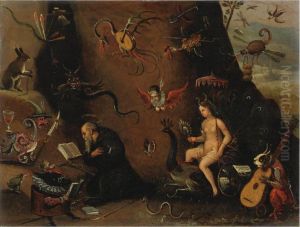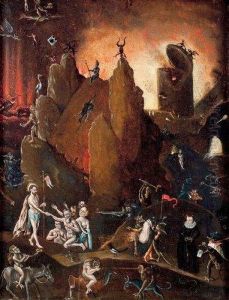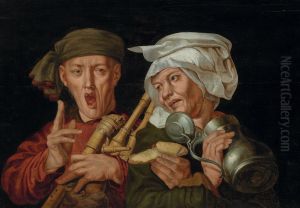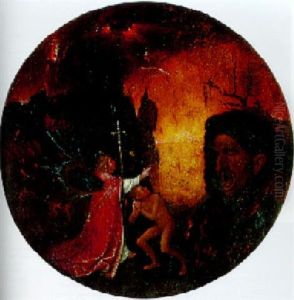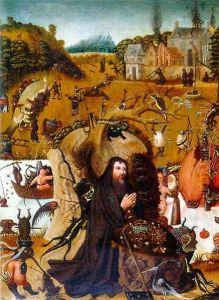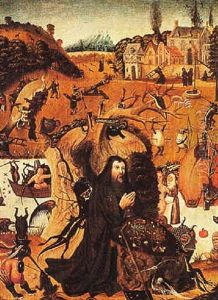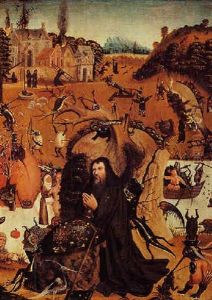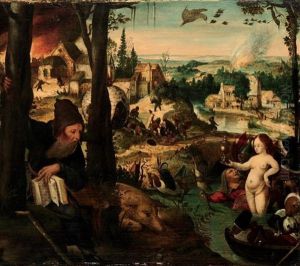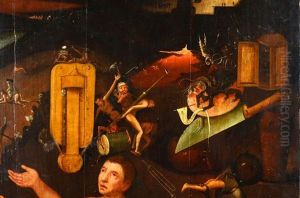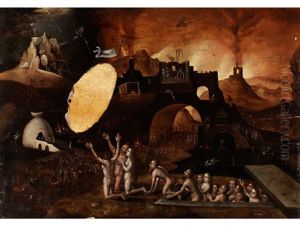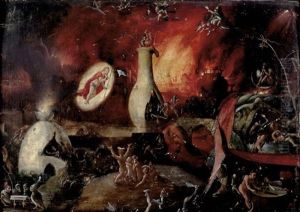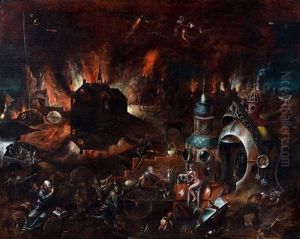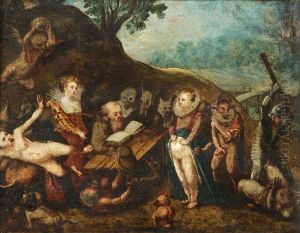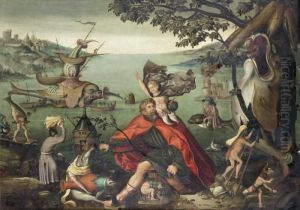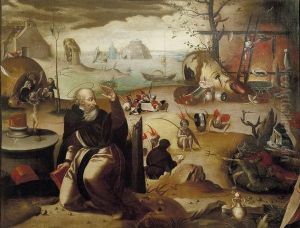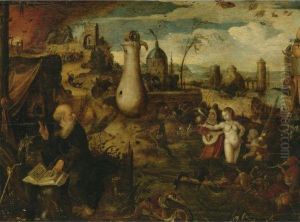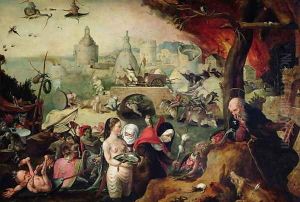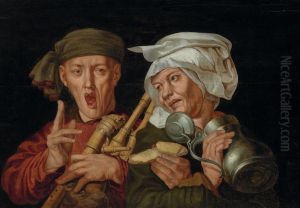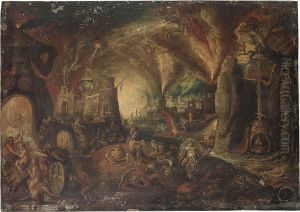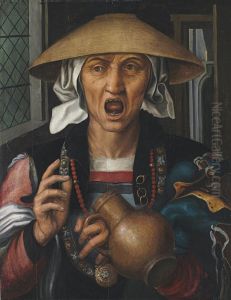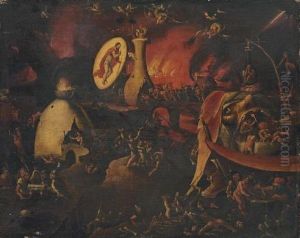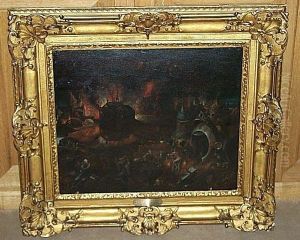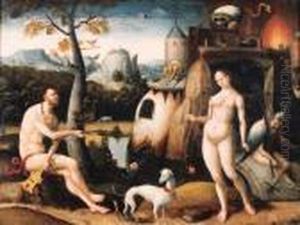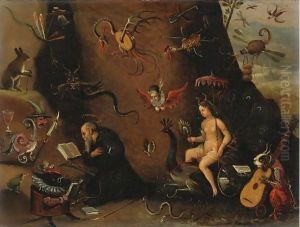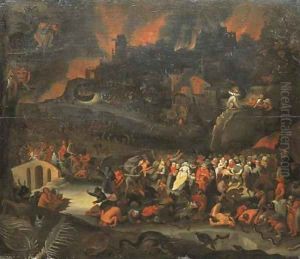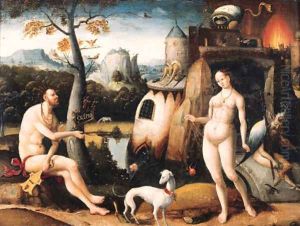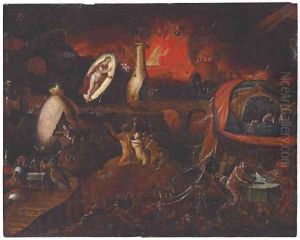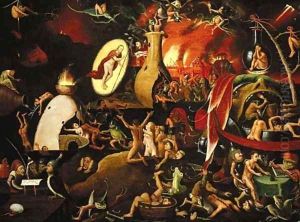Pieter Huys Paintings
Pieter Huys was a Flemish painter born around 1519 or 1520, likely in Antwerp, which was then part of the Habsburg Netherlands. Little is known about his early life, and much of what we know about Huys is derived from his works and the few historical records that mention him. He is often considered to be a follower of Hieronymus Bosch, the renowned Early Netherlandish painter known for his fantastical and symbolic imagery.
Huys developed his artistic career during a period of great social and religious turmoil, which is often reflected in the themes of his paintings. He became a master in the Antwerp Guild of St. Luke in 1545, which indicates that by this time, he had established himself sufficiently as an artist to join the guild. His style was heavily influenced by Bosch, and he is known to have continued the master's tradition of depicting moralizing subjects filled with grotesque creatures and nightmarish scenes that were meant to instruct and caution viewers.
While Huys's works were indebted to Bosch, he also incorporated his own sense of creativity and expression into his paintings. His artworks often featured complex, detailed landscapes filled with allegorical and sometimes surreal elements. He was skilled in conveying texture and atmosphere, and his use of color was vibrant and effective in creating mood. Notable works by Pieter Huys include 'The Temptation of St. Anthony' and 'An Allegory of Folly'.
Unfortunately, Pieter Huys's work was eventually overshadowed by other artists from the Dutch and Flemish traditions, and as a result, he is not as well remembered as some of his contemporaries. He passed away in Antwerp in 1584, leaving behind a body of work that, while not extensive, contributes to the understanding of post-Boschian art in the Netherlands. His paintings can be seen today in various museums and collections, where they continue to intrigue and fascinate viewers with their complex iconography and imaginative details.
